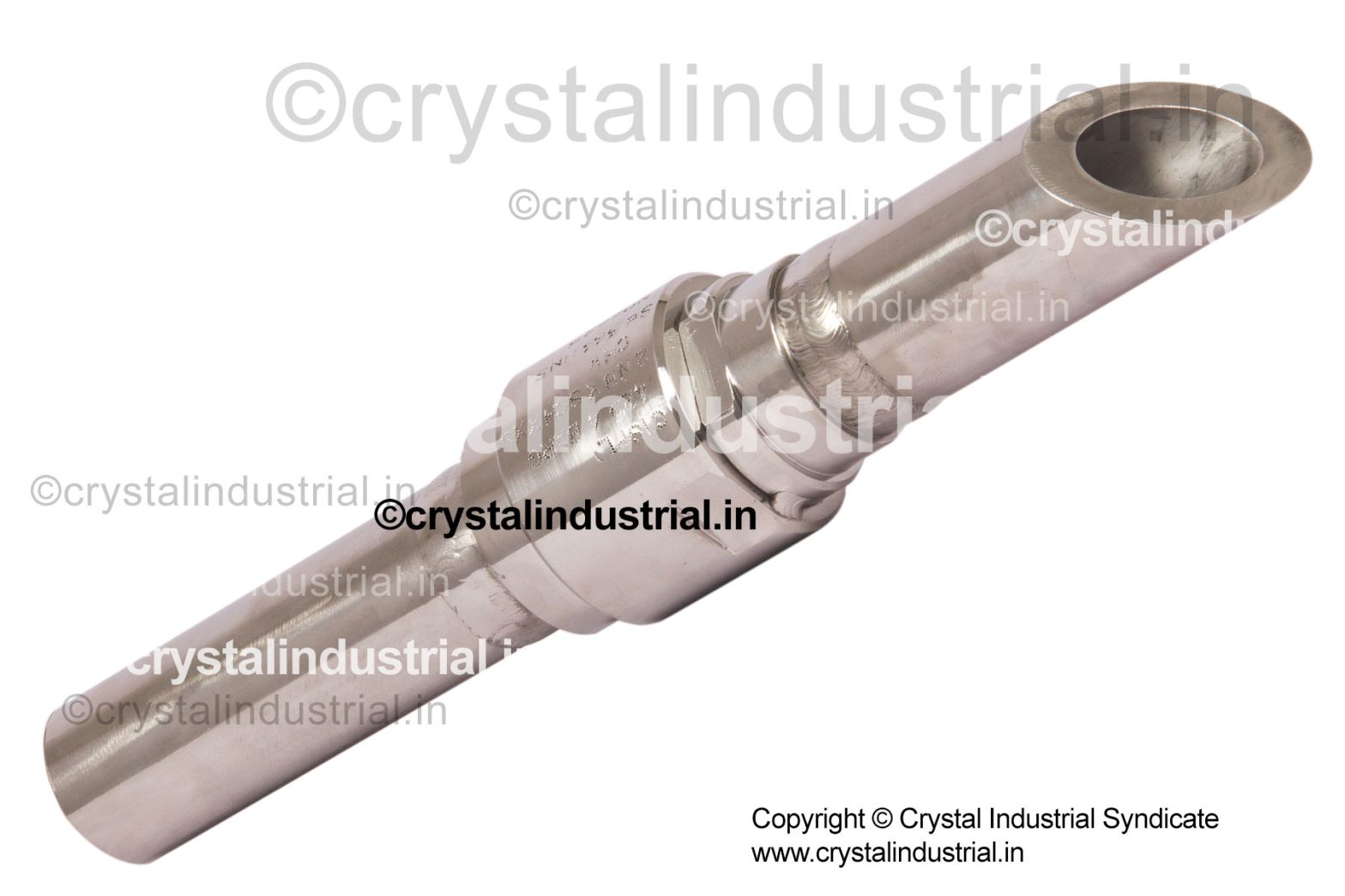Chemical Injection Quills from Crystal Industrial Syndicate are used to inject mild to highly corrosive chemicals into pipelines without causing damage to the side port or pipe wall at the injection location. Chemical injection quills guarantee that chemicals are equally distributed into the pipeline’s centre, preventing chemical channelling along the pipe wall. Both the body and the stinger are made of chemically resistant polymers or alloys (PVC, Kynar, 316 SS, or Hastelloy C-276). Injection quills with stingers ranging in length from 3″ to 8″ are readily accessible. For simplicity of installation, all injection quills come with female by male NPT connections.
We carry many Stinger Lengths in Stock
Crystal Industrial carries all quill sizes and materials in a variety of stinger lengths. Custom stinger lengths are available upon request for all connection sizes and materials.
Precision-Engineered Parts
Machined housings ensure consistent chemical dispersion in the pipeline’s centre. Each unit includes an inbuilt removable spring-loaded ball check to prevent the injected chemical from flowing into the main flow when the system is turned off.
Purpose of Chemical injection quills
Chemical injection quills are an essential tool used in a variety of industries to introduce chemicals into a process stream or storage vessel in a precise and controlled manner. These devices are commonly used in the chemical processing, oil and gas, and water treatment industries to help improve and control various processes, as well as protect equipment from damage.
One of the primary purposes of chemical injection quills is to introduce chemicals into a system to prevent corrosion. Corrosion is a natural process that occurs when metal is exposed to water or other liquids, causing it to deteriorate and weaken over time. This can be a major problem in industries such as oil and gas, where corrosion can lead to costly equipment failures and safety hazards. To prevent corrosion, companies often use corrosion inhibitors, which are chemicals that form a protective layer on metal surfaces and prevent the chemical reactions that cause corrosion. Chemical injection quills are used to accurately and consistently introduce corrosion inhibitors into a system, helping to extend the lifespan of equipment and reduce maintenance costs.
In addition to preventing corrosion, chemical injection quills are also used to introduce biocides into a system. Biocides are chemicals that are used to kill or control the growth of microorganisms, such as bacteria and algae. These microorganisms can cause a variety of problems in industrial systems, including fouling and corrosion, as well as produce toxins that can be harmful to humans and animals. Chemical injection quills are used to accurately and consistently introduce biocides into a system to control the growth of microorganisms and prevent these problems.
Another important use of chemical injection quills is to introduce scale inhibitors into a system. Scale is a hard, mineral deposit that can form on the surfaces of pipes and other equipment, reducing the efficiency of the system and potentially causing equipment failure. Scale is often formed by the precipitation of minerals from the water or other liquid being processed. To prevent scale formation, companies use scale inhibitors, which are chemicals that prevent the minerals from precipitating out of the solution and forming scale. Chemical injection quills are used to accurately and consistently introduce scale inhibitors into a system, helping to maintain the efficiency of the system and prevent equipment failure.
In addition to their specific purposes, chemical injection quills offer several general benefits compared to other methods of introducing chemicals into a system. One major benefit is the ability to accurately and consistently dose chemicals. With chemical injection quills, the flow rate of the chemical can be carefully controlled, ensuring that the correct amount of chemical is introduced into the system. This is important for maintaining the effectiveness of the chemical and avoiding overuse, which can be wasteful and potentially harmful to the environment.
Another benefit of chemical injection quills is their ability to introduce chemicals into a system in a safe and controlled manner. Many chemicals used in industrial processes can be hazardous, and proper handling and storage is crucial to prevent accidents and protect workers and the environment. Chemical injection quills allow for the introduction of chemicals without the need for manual handling, reducing the risk of spills and other accidents.
In summary, chemical injection quills are an essential tool used in a variety of industries to introduce chemicals into a process stream or storage vessel in a precise and controlled manner. These devices are used to prevent corrosion, control the growth of microorganisms, and prevent scale formation, helping to improve and control various processes and protect equipment from damage. Chemical injection quills offer several benefits compared to other methods of introducing chemicals, including the ability to accurately and consistently dose chemicals and introduce them in a safe and controlled manner.
If you would like to know how Crystal Industrial Syndicate’s products can support your injection quills requirements, please contact us. We can understand your injection quills requirements and recommend custom-built solutions. Contact us
Copyright © 2023 by Crystal Industrial Syndicate Pvt Ltd. All rights reserved. www.crystalindustrial.in
